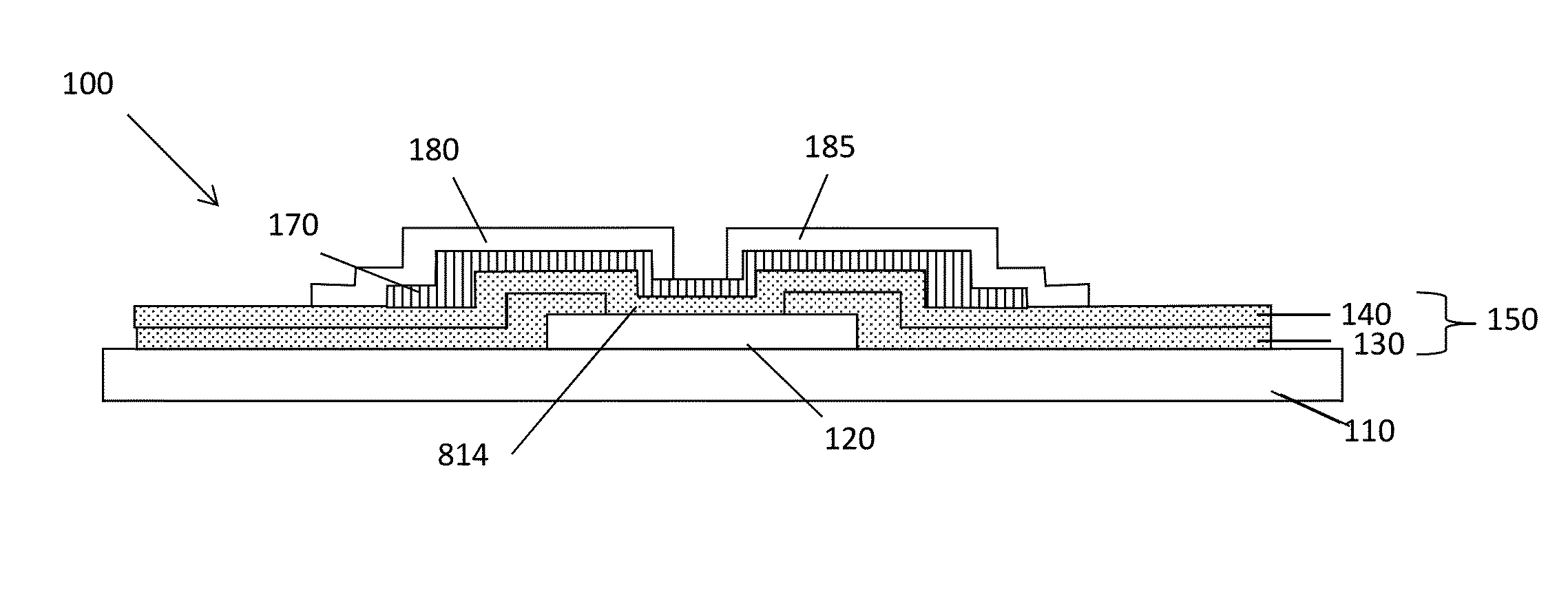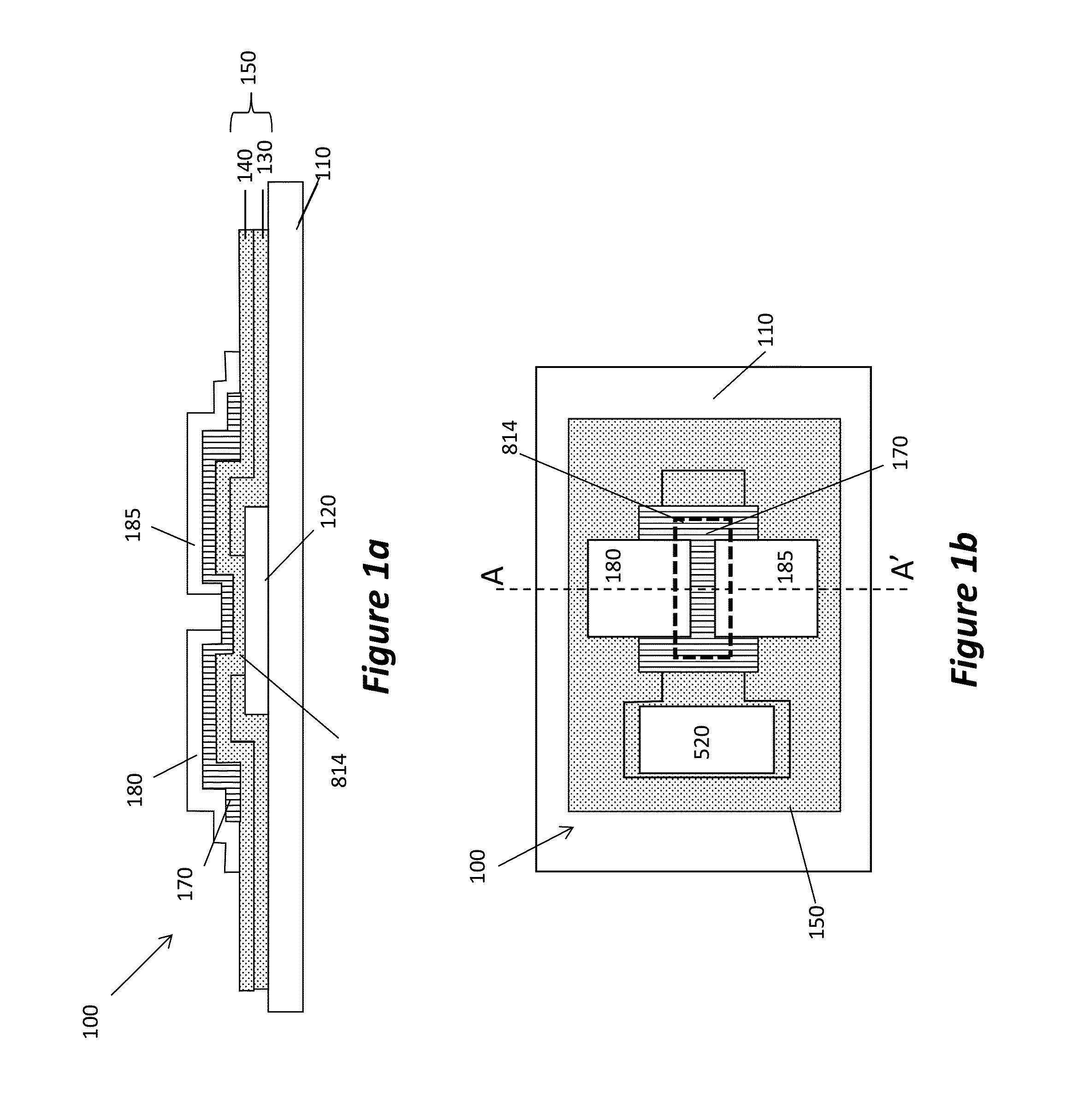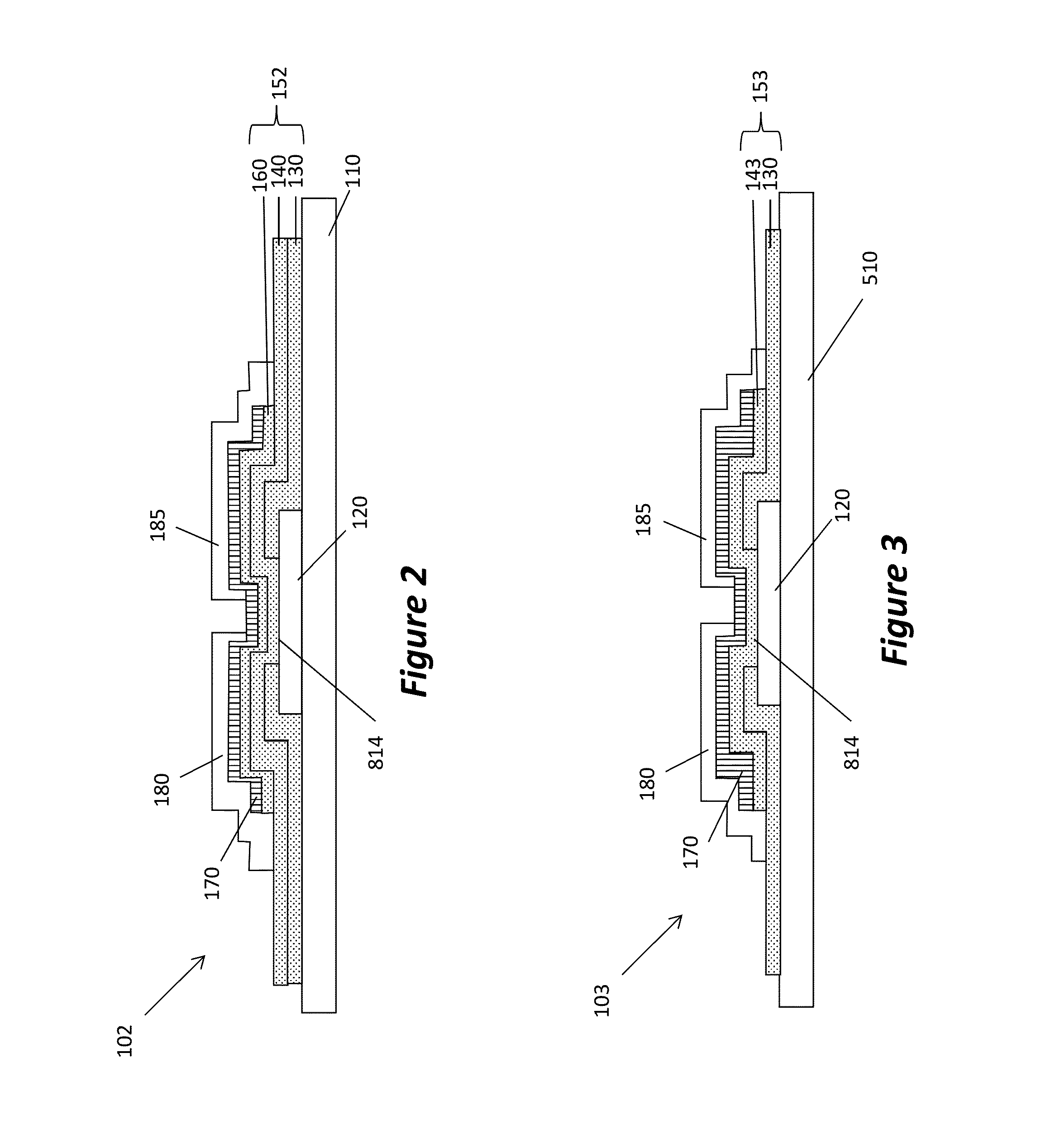Enhancement-depletion mode inverter with two transistor architectures
a transistor and architecture technology, applied in the direction of transistors, semiconductor devices, electrical equipment, etc., can solve the problems of device processing, difficult to perform transistor component alignment across typical substrate widths up to one meter or more, and the impact of traditional photolithographic processes and equipmen
- Summary
- Abstract
- Description
- Claims
- Application Information
AI Technical Summary
Benefits of technology
Problems solved by technology
Method used
Image
Examples
examples
General Conditions for the Preparation of Layers Using Atmospheric Pressure ALD
[0130]The preparation of a thin film coating of the material layers on glass substrates as used in the examples is described below. The ALD coating device used to prepare these layers, namely aluminum oxide, ZnO:N, and Al-doped ZnO (AZO), has been described in detail in US Patent Application Publication No. US 2009 / 0130858, the disclosure of which is herein incorporated by reference in its entirety. The coating device has an output face (facing up) that contains spatially separated elongated gas channels and operates on a gas bearing principle. The coating device can be understood with respect to delivery head 900 shown in FIG. 28. Each gas channel is composed of an output slot 95, 93, 92 which supplies gas to the output face 905, and adjacent exhaust slots 91 which remove gas from the output face 905. The order of the gas channels is P-O-P-M-P-O-P-M-P-O-P where P represents a purge channel, O represents ...
example i1
Inventive Example I1
[0139]Bottom Gate TFT with an Extra 500 Å Outside of the Channel Region
[0140]Inventive Example I1 is a bottom-gate transistor with the variable thickness dielectric stack of the present invention. Inventive Example E1 was fabricated as Comparative Example C1 with the following exceptions. After removing the PVP used to pattern the gate, a 500 Å extra dielectric layer having a gate via was formed using selective area deposition. The transistors were completed and characterized as in comparative example C1 . The performance data for Inventive Example I2 can be found in the Id-Vg curve shown in FIG. 29.
[0141]As can be seen in FIG. 29, the inventive examples having the extra dielectric outside of the channel region perform similarly to the comparative example without the extra dielectric layer, having the same gate dielectric thickness within the channel region.
All-Enhancement-Mode Inverters
[0142]In order to further probe the usefulness of the variable thickness diel...
##ventive example 13
Inventive Example 13
[0147]Inverter with Variable Thickness Dielectric Stack
[0148]Inventive example I3, was prepared as comparative example C1 with the following exception. After removing the PVP used to pattern the gate, a 250 Å extra dielectric layer having a gate via was formed using selective area deposition (as in Inventive Example I1). The pattern is chosen so that the inverters have the variable dielectric stack illustrated in FIGS. 22a and 22b. This results in inverters of Inventive Example I3 having drive TFTs with a total gate dielectric thickness of 500 Å, and the load TFT having a total gate dielectric thickness of 750 Å. The drive transistors for each inverter had as designed W=6 pixel / L=1 pixel, and the load transistors for each inverter had an as designed W=3 pixel / L=3 pixel. The circuit was characterized as in Comparative example C2, and the frequency, time per stage, and fraction of the peak-to-peak swing for Vdd=16 V can be found in Table 2.
PUM
 Login to View More
Login to View More Abstract
Description
Claims
Application Information
 Login to View More
Login to View More - R&D
- Intellectual Property
- Life Sciences
- Materials
- Tech Scout
- Unparalleled Data Quality
- Higher Quality Content
- 60% Fewer Hallucinations
Browse by: Latest US Patents, China's latest patents, Technical Efficacy Thesaurus, Application Domain, Technology Topic, Popular Technical Reports.
© 2025 PatSnap. All rights reserved.Legal|Privacy policy|Modern Slavery Act Transparency Statement|Sitemap|About US| Contact US: help@patsnap.com



